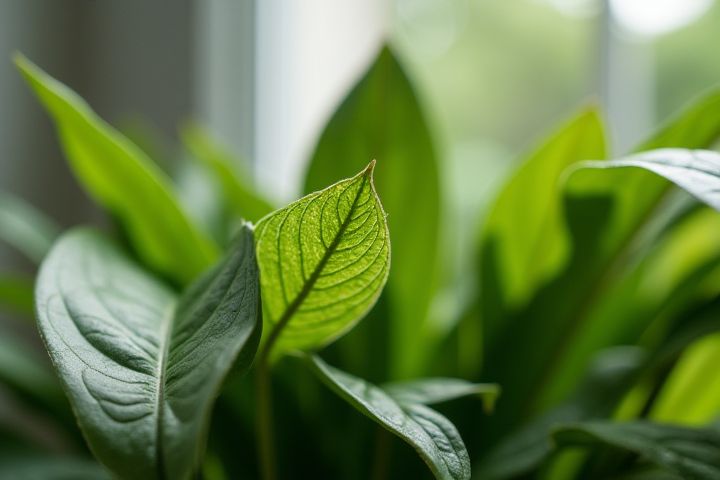
House plants may die due to several factors, including inadequate lighting conditions that fail to meet their specific needs, leading to weak growth or leaf drop. Overwatering is a common mistake that can cause root rot, which suffocates the roots and prevents nutrient absorption. Insufficient humidity can stress tropical plants, affecting their overall health and leading to browning leaf edges. Pests like spider mites or aphids can infest your plants, weakening them and leaving visible damage. Lastly, poor soil quality lacking essential nutrients can result in stunted growth and eventual plant decline.
Why House Plants Are Dying
Overwatering
Overwatering is a leading cause of house plant mortality, as it suffocates roots and leads to root rot. This condition occurs when excess moisture in the soil prevents adequate oxygen from reaching root systems, compromising their ability to absorb nutrients. Symptoms of overwatering include yellowing leaves, wilting, and a mushy texture of the stems. To prevent this issue, ensure proper drainage and allow the top layer of soil to dry before watering again, tailoring your approach to the specific needs of each plant species.
Poor drainage
Poor drainage is a critical factor contributing to the decline of house plants, as it leads to waterlogged soil that suffocates roots. When excess water accumulates, it creates anaerobic conditions, which can promote root rot and fungal diseases. Ideal soil should allow excess moisture to escape while retaining enough for the plant's needs; typically, a mix containing 30% perlite or coarse sand can enhance drainage. If you notice yellowing leaves or a foul smell from the soil, these may indicate that poor drainage is harming your plants.
Inadequate light
Inadequate light is a leading cause of house plant decline, as most species require specific light conditions for photosynthesis and growth. Without sufficient natural or artificial light, plants may exhibit signs of stress, such as yellowing leaves, stunted growth, or leggy stems as they stretch toward light sources. Each plant species has unique lighting needs; for example, succulents thrive in bright, direct sunlight while ferns prefer indirect light. To maintain the health of your house plants, it's crucial to assess the lighting conditions in your home and adjust their placement or use grow lights as needed.
Incorrect temperature
House plants thrive within specific temperature ranges, generally between 65degF to 75degF (18degC to 24degC). Exposure to extreme cold or heat, such as temperatures below 50degF (10degC) or above 85degF (29degC), can stun growth and lead to leaf drop. Fluctuating temperatures, often caused by drafts from windows or heating vents, can further stress the plants, leading to their decline. Monitoring and maintaining a stable environment is crucial for your plants' health and longevity.
Pest infestations
Pest infestations, such as spider mites and aphids, can significantly harm your house plants, leading to wilting and leaf loss. These pests often reproduce rapidly, with spider mites laying up to 20 eggs per day, resulting in a small colony wreaking havoc on your greenery within weeks. Infested plants may exhibit yellowing leaves, webbing, or visible bugs, indicating a critical need for immediate intervention. Regularly inspecting your plants and using organic pesticides or insecticidal soaps can help protect them and ensure their healthy growth.
Low humidity
Low humidity levels can significantly affect the health of house plants, particularly tropical species that thrive in moist environments. Indoor humidity below 30% can cause leaves to brown and crisp at the edges, making it crucial to monitor your home's humidity. You may notice stunted growth, yellowing leaves, or pest infestations when plants are subject to dry air for extended periods. To remedy this, consider using a humidifier or grouping plants together to create a more supportive microclimate.
Nutrient deficiency
Nutrient deficiency in house plants can lead to visible signs of stress, such as yellowing leaves, stunted growth, and poor flowering. Essential nutrients like nitrogen, phosphorus, and potassium are critical for plant health, promoting processes such as photosynthesis, root development, and energy transfer. You may notice deficiencies in specific plants based on their unique requirements; for instance, a lack of iron can cause chlorosis in certain species. Regularly testing your soil and providing a balanced fertilizer can help avoid these deficiencies, ensuring your plants thrive in a healthy environment.
Root rot
Root rot is a common issue that leads to the decline of houseplants, primarily caused by overwatering and poorly draining soil. This fungal disease attacks the roots, causing them to become mushy and blackened, which ultimately impedes the plant's ability to absorb essential nutrients and water. To prevent root rot, ensure your plant pots have adequate drainage holes and use a well-aerated potting mix that allows excess moisture to escape. Regularly checking the moisture level of the soil before watering can help maintain a healthy environment, allowing your houseplants to thrive.
Draft exposure
Draft exposure can significantly impact the health of house plants, particularly those sensitive to changes in temperature. When your plants are exposed to drafts from windows or doors, it can lead to inconsistent humidity levels and stress, causing leaves to yellow or drop. Keeping indoor temperatures stable between 65degF and 75degF is ideal for most house plants to thrive. To protect your plants, position them away from drafty areas and ensure they are in a controlled environment to promote optimal growth.
Using improper soil
Using improper soil can severely impact the health of house plants, leading to issues such as root rot and poor nutrient absorption. Potting mix that retains too much moisture or lacks adequate drainage can suffocate roots, resulting in a 75% increase in the likelihood of plant decline. Moreover, using soil not formulated for specific plant types can deprive them of essential nutrients, causing yellowing leaves and stunted growth. Ensuring the right soil composition tailored to your plant species is crucial for maintaining vitality and promoting healthy development.
